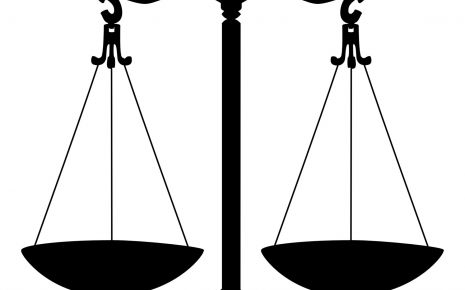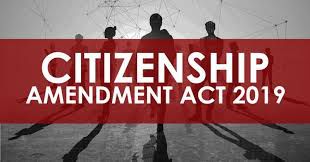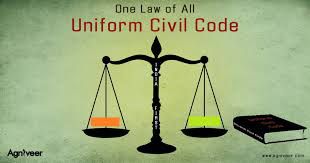Constitutional Status of Women in India
Legally, a girl becomes a woman after experiencing her adolescence and
childhood, therefore after going through those stages, a girl becomes a woman.
The Indian government has passed several legislations to safeguard women from
various forms of abuse and crime and to grant them the same status as men in our
nation. Fundamental rights and duties are provided to Indian citizens under the
Constitution. These rights and duties apply to all the citizens of this nation.
Additionally, it permits the state to take extra precautions for women and children (article 15(3)) and forbids actions that are demeaning to women's dignity (article 51(A)(e)). It also permits the provision of safe and humane working conditions and maternity care throughout the State (Article42). Studies have demonstrated that in ancient times during the early Vedic period, women held the same rank and power.
However, around 500 B.C., the quality of women started to decline, which led to a fall in women's independence and rights that was exacerbated by the Islamic conquest of Babur, the Mughal Empire, and Christianity. When child marriage and widow remarriage became illegal in several communities in India throughout the Middle Ages, the status of Indian women in community began to degrade. In India's war for freedom, women played a role as well.
With British authority, women's conditions started to get better. Indian women are currently actively participating in a broad range of fields, including education, sports, politics, the media, the arts and culture, commerce, science and technology, etc. The oldest prime minister in the world is Indira Gandhi, who served as India's leader for a total of 15 years. Numerous initiatives and provisions in favour of women are carried out by the Indian government.
Article 14 of the Constitution of India:
All persons, including women, have equivalent rights and are entitled to equal protection under the laws of India's territorial jurisdiction, according to Article 14 of the Indian Constitution. It indicates that everyone must be treated equally in all situations, regardless of gender. The law should be applied equally to all citizens without regard to race or ethnicity.
Article 15 of the Constitution of India:
It is prohibited for the state to discriminate against any person, including women, because of their race, gender, religion, place of birth, or socioeconomic background, according to Article 15 of the Indian Constitution. It establishes that all residents are entitled to the same rights with regard to infrastructure, public spaces, banks, hotels, restaurants, and other businesses.
Article 16 of the Constitution of India:
Women have equal opportunity in public work, including all citizens, under Article 16 of the Indian Constitution, irrespective of their gender, color, caste, ethnicity, religion, or religion of socioeconomic origin.
Article 17 of the Constitution of India:
Untouchability was abolished in 1955 when the Untouchability (Criminal Offenses) Act was approved by the Parliament, in accordance with Article 17 of the Indian Constitution. The Untouchability (Criminal Offenses) Amendment Act of 1976 amended the law to make it stricter and get rid of society's untouchability.
Article 19 of the Constitution of India:
In accordance with Article 19 of the Indian Constitution, all people, including women, have the right to freedom of speech, the ability to peacefully assemble without weapons, the ability to form unions or associations, the freedom to move around the country without restriction, the right to live and settle anywhere, and the right to engage in any occupation or operate any lawful business as they see fit.
Article 21 of the Constitution of India:
No one may be deprived of his or her life or personal freedom, according to the procedure established under law. Included are the rights to life, dignity, privacy, and other basic freedoms. Since it diminishes the self-esteem and dignity of the victims, domestic violence against women also violates Article 21 of the Indian Constitution.
Article 21A of the Constitution of India:
Article 21A of the Indian Constitution states that all children between the ages of six and fourteen are entitled to free and compulsory education, as defined by law.
Article 24 of the Constitution of India:
According to Article 24 of the Indian Constitution, boys and girls under the age of 14 are not allowed to work in factories, quarries, or other hazardous occupations.
Conclusion
Although the Indian constitution guarantees women the very same rights as men, powerful patriarchal traditions continue because of long-standing social norms that still apply to women today. In most Indian homes, a girl is treated as a burden and raised to feel that she is weaker than males. Women's rights are protected on a national level to secure the advancement of women through socioeconomic and educational possibilities, in order to fulfil the constitutional goals of equality and social justice for historical reasons.
Through affirmative action in government, employment, and other sectors, they have changed in recent decades in your favour. Despite this, it has been common knowledge in newspapers and other media that crimes committed against women often result in severe consequences. Our society is still dominated by maleism.
The primary cause of all this misery is illiteracy. Despite the development of education and other significant improvements in Indian society, certain changes have been made and implemented in a variety of ways, but Indian women are still mostly in the dark. A woman experiences more difficulties in her life than a guy.
The world is respectable when women are respected. The most cowardly person is the one who abuses women. Women are strong and committed to their families; but, this does not exclude them from working outside the home. Sometimes they outperform official or academic performance.
All Indian women have the following rights under the Indian Constitution:
- Equality (Article 14),
- No discrimination by the State Authority (Article 15(1)),
- Equality of opportunity (Article 16),
- Equal pay for equal work in every term (Article 39(d)),
Additionally, it permits the state to take extra precautions for women and children (article 15(3)) and forbids actions that are demeaning to women's dignity (article 51(A)(e)). It also permits the provision of safe and humane working conditions and maternity care throughout the State (Article42). Studies have demonstrated that in ancient times during the early Vedic period, women held the same rank and power.
However, around 500 B.C., the quality of women started to decline, which led to a fall in women's independence and rights that was exacerbated by the Islamic conquest of Babur, the Mughal Empire, and Christianity. When child marriage and widow remarriage became illegal in several communities in India throughout the Middle Ages, the status of Indian women in community began to degrade. In India's war for freedom, women played a role as well.
With British authority, women's conditions started to get better. Indian women are currently actively participating in a broad range of fields, including education, sports, politics, the media, the arts and culture, commerce, science and technology, etc. The oldest prime minister in the world is Indira Gandhi, who served as India's leader for a total of 15 years. Numerous initiatives and provisions in favour of women are carried out by the Indian government.
Legal Status Of A Woman In India
In India, women are given legal protection to defend their economic, social, and cultural lives. These are some of the steps the Indian government has taken to protect women's lives.- Dowry Prohibition Act 1961,
- Maternity Benefit Act 1861, Births, Deaths & Marriages Registration Act 1886,
- Medical Termination of Pregnancy Act 1971,
- National Commission for Women Act 1990,
- Pre-natal Diagnostic Techniques (Regulation and Prevention of Misuse) Act 1999,
- Protection of Women from Domestic Violence Act 2005,
- Sexual Harassment of Women at Work Place (Prevention, Prohibition & Redressal) Act 2013,
- Hindu Widows Remarriage Act 1856,
- Muslim women (protection of rights on divorce) Act 1986,
- Guardians and Wards Act of 1890,
- Indian Penal Code 1860,
- Christian Marriages Act, 1872, etc.
Fundamental Rights To Improve The Status Of Women
As shown below, the articles in Part III of the Indian Constitution specifically refer to fundamental rights intended to enhance women's status and give them equal opportunities:Article 14 of the Constitution of India:
All persons, including women, have equivalent rights and are entitled to equal protection under the laws of India's territorial jurisdiction, according to Article 14 of the Indian Constitution. It indicates that everyone must be treated equally in all situations, regardless of gender. The law should be applied equally to all citizens without regard to race or ethnicity.
Article 15 of the Constitution of India:
It is prohibited for the state to discriminate against any person, including women, because of their race, gender, religion, place of birth, or socioeconomic background, according to Article 15 of the Indian Constitution. It establishes that all residents are entitled to the same rights with regard to infrastructure, public spaces, banks, hotels, restaurants, and other businesses.
Article 16 of the Constitution of India:
Women have equal opportunity in public work, including all citizens, under Article 16 of the Indian Constitution, irrespective of their gender, color, caste, ethnicity, religion, or religion of socioeconomic origin.
Article 17 of the Constitution of India:
Untouchability was abolished in 1955 when the Untouchability (Criminal Offenses) Act was approved by the Parliament, in accordance with Article 17 of the Indian Constitution. The Untouchability (Criminal Offenses) Amendment Act of 1976 amended the law to make it stricter and get rid of society's untouchability.
Article 19 of the Constitution of India:
In accordance with Article 19 of the Indian Constitution, all people, including women, have the right to freedom of speech, the ability to peacefully assemble without weapons, the ability to form unions or associations, the freedom to move around the country without restriction, the right to live and settle anywhere, and the right to engage in any occupation or operate any lawful business as they see fit.
Article 21 of the Constitution of India:
No one may be deprived of his or her life or personal freedom, according to the procedure established under law. Included are the rights to life, dignity, privacy, and other basic freedoms. Since it diminishes the self-esteem and dignity of the victims, domestic violence against women also violates Article 21 of the Indian Constitution.
Article 21A of the Constitution of India:
Article 21A of the Indian Constitution states that all children between the ages of six and fourteen are entitled to free and compulsory education, as defined by law.
Article 24 of the Constitution of India:
According to Article 24 of the Indian Constitution, boys and girls under the age of 14 are not allowed to work in factories, quarries, or other hazardous occupations.
Safety Framework
The government of India has several regulations in place to safeguard and defend women's lives throughout the country. Women's lives are not yet completely safe despite these laws, norms, and regulations. Inequality among men and women exists across the country, whether it is in terms of economic possibilities, government, or educational prospects.Some statistics on women are included:
- According to the National Office of Criminal Records, a girl was killed every hour in 2010 because of dowry demand.
- According to the International Centre for Women's Studies, 45% of Indian girls get married before turning 18 years old.
- One in five Indian women pass away while pregnancy or giving birth (WHO).
Women Empowerment Schemes
- Beti Bachao Beti Padhao Scheme,
- One Stop Centre Scheme,
- Women Helpline Scheme,
- UJJAWALA: A Strategic Plan for the Rescue, Rehabilitation, and Re-Inclusion of Trafficking and Commercial Sexual Exploitation Victims,
- Working Women Hostel,
- Ministry approves new projects under Ujjawala Scheme and continues existing projects,
- SWADHAR Greh (A Scheme for Women in Difficult Circumstances),
- Support to Training and Employment Programme for Women (STEP),
- NARI SHAKTI PURASKAR,
- Awardees of Stree Shakti Puruskar, 2014 & Awardees of Nari Shakti Puruskar,
- Awardees of Rajya Mahila Samman & Zila Mahila Samman,
- Mahila police Volunteers,
- Mahila E-Haat,
- Mahila Shakti Kendras (MSK),
- NIRBHAYA
Conclusion
Although the Indian constitution guarantees women the very same rights as men, powerful patriarchal traditions continue because of long-standing social norms that still apply to women today. In most Indian homes, a girl is treated as a burden and raised to feel that she is weaker than males. Women's rights are protected on a national level to secure the advancement of women through socioeconomic and educational possibilities, in order to fulfil the constitutional goals of equality and social justice for historical reasons.
Through affirmative action in government, employment, and other sectors, they have changed in recent decades in your favour. Despite this, it has been common knowledge in newspapers and other media that crimes committed against women often result in severe consequences. Our society is still dominated by maleism.
The primary cause of all this misery is illiteracy. Despite the development of education and other significant improvements in Indian society, certain changes have been made and implemented in a variety of ways, but Indian women are still mostly in the dark. A woman experiences more difficulties in her life than a guy.
The world is respectable when women are respected. The most cowardly person is the one who abuses women. Women are strong and committed to their families; but, this does not exclude them from working outside the home. Sometimes they outperform official or academic performance.
Law Article in India
Legal Question & Answers
Lawyers in India - Search By City
LawArticles
How To File For Mutual Divorce In Delhi

How To File For Mutual Divorce In Delhi Mutual Consent Divorce is the Simplest Way to Obtain a D...
Increased Age For Girls Marriage

It is hoped that the Prohibition of Child Marriage (Amendment) Bill, 2021, which intends to inc...
Facade of Social Media

One may very easily get absorbed in the lives of others as one scrolls through a Facebook news ...
Section 482 CrPc - Quashing Of FIR: Guid...

The Inherent power under Section 482 in The Code Of Criminal Procedure, 1973 (37th Chapter of t...
The Uniform Civil Code (UCC) in India: A...

The Uniform Civil Code (UCC) is a concept that proposes the unification of personal laws across...
Role Of Artificial Intelligence In Legal...

Artificial intelligence (AI) is revolutionizing various sectors of the economy, and the legal i...








Please Drop Your Comments